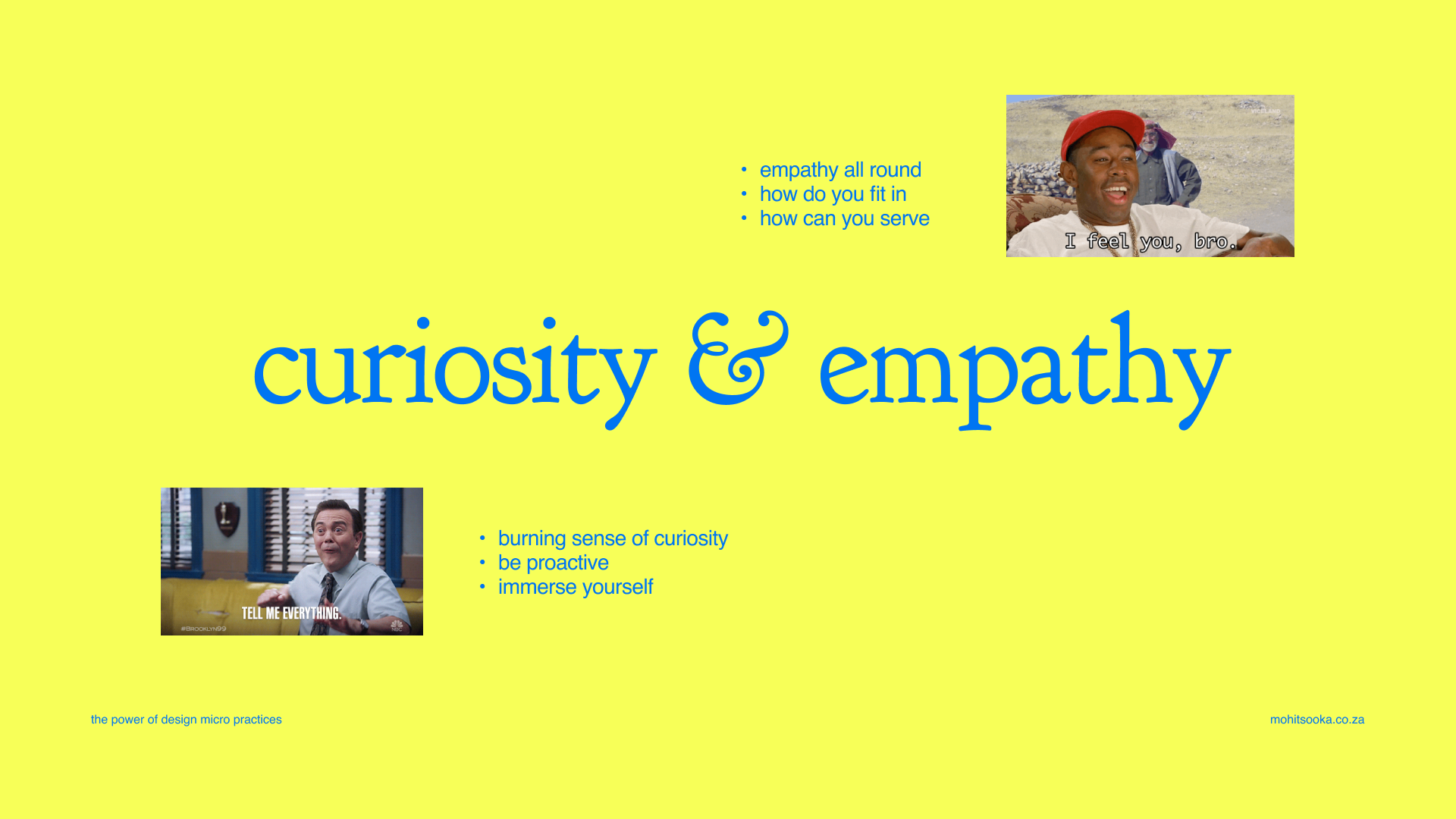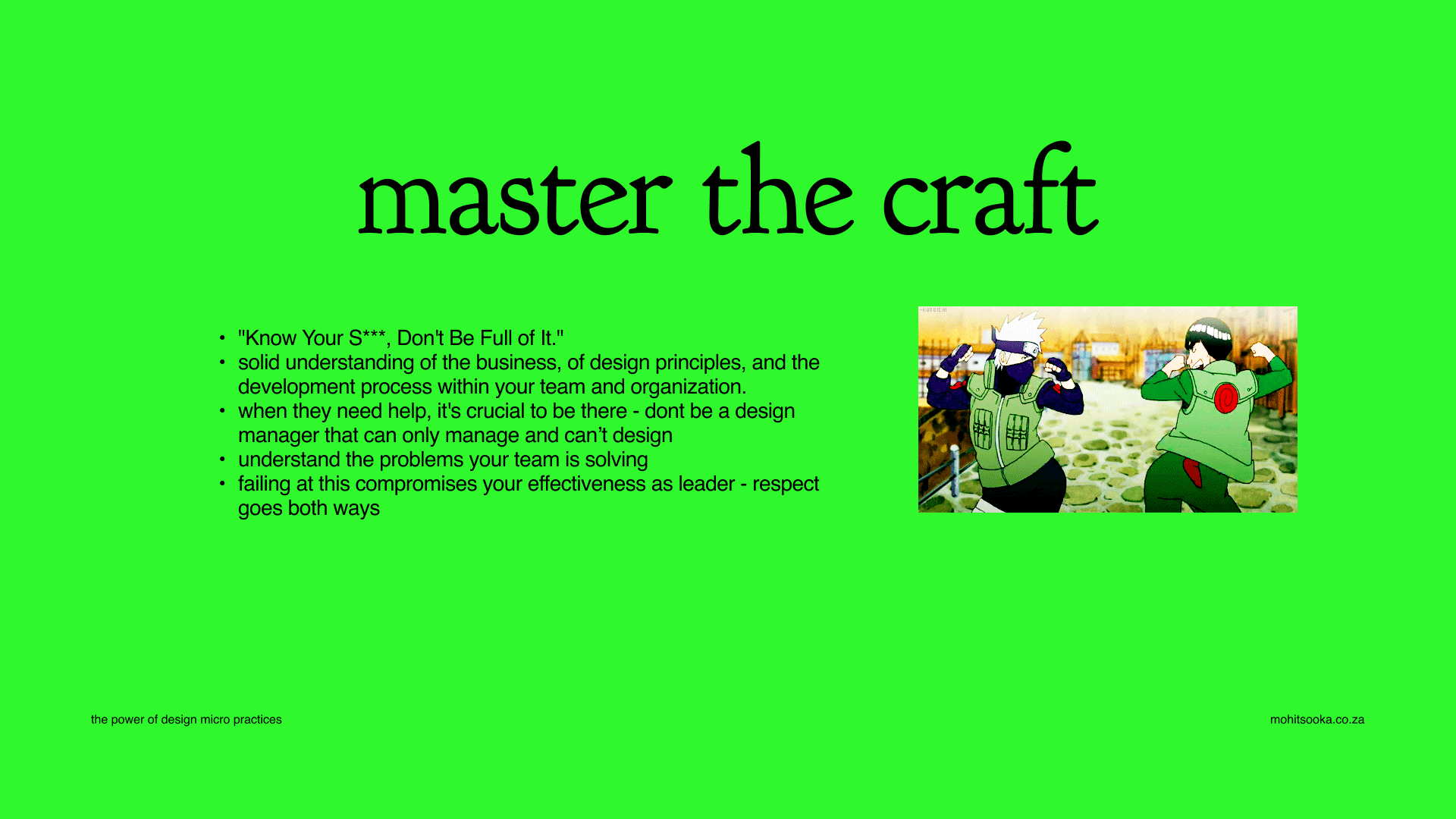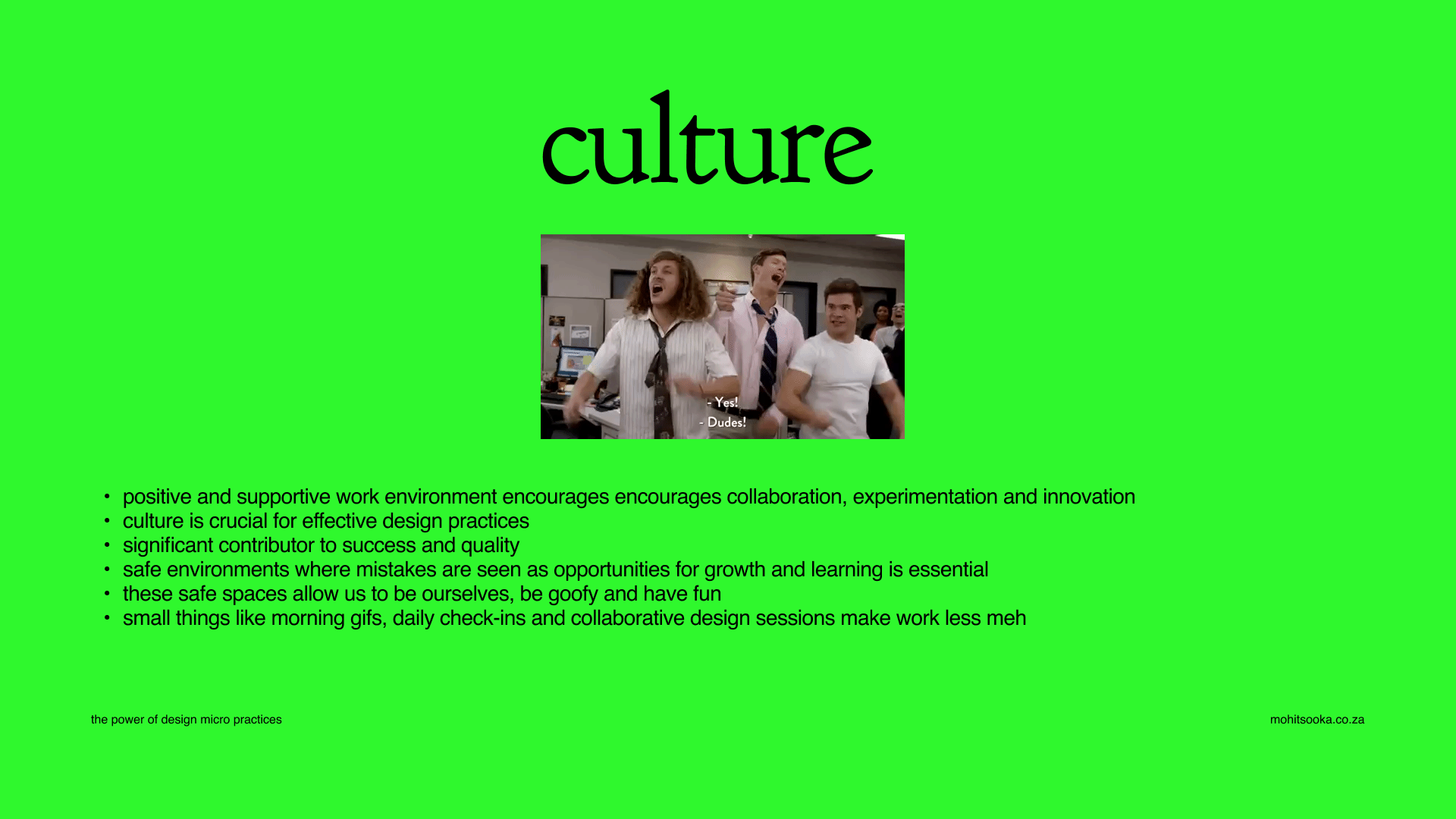Practice in Praxis Part 2 - A Blog Series
Introduction

Previously on Dragon Ball Z: Mo, a seasoned designer with over 15 years of experience, guided us through his leadership experiences across four diverse design teams. He opened up about his life, his passion for leveraging design and technology to resolve business issues, and the evolution of his successful 'design micro-practices.' Exploring each team's journey, he talked about their trials, triumphs, and the resulting learnings. From empathy and culture to autonomy, ownership, and flexibility, Mo's insights have sculpted his current thriving micro-practice, replete with an eclectic mix of gifted designers.
And now, as we continue this epic journey, stay tuned for Part Two, where we'll delve deeper into the individual lessons from each team and explore how they've contributed to the sustained success of Mo's current design micro-practice! Our story is separated into two sections, one for new designers or people new to design, and then the second caters to the more battle-hardened veterans of the design realm.
Characteristics of successful designers

Curiosity and Empathy
It's crucial that every team member, whether junior or not, come on board with a burning sense of curiosity, eager to know everything and fill the gaps in their knowledge. We should strive to internalise this curiosity, immersing ourselves in our work and being proactive in finding information.
But curiosity isn't enough. We must also be empathetic, not just towards our users and their pain points, but towards our team members as well. Understanding how we fit into the team and what our responsibilities are is key to success. As a designer, it's our job to bring our client's vision to life, to take on problems for our leadership, and to provide support to our team members.
To be empathetic, we need to constantly ask ourselves how we can make our team members' lives easier. This can be applied to everyone, including developers and product owners. We must be empathetic towards their needs, keeping our tools and assets easy to use and understanding that we're solving a problem for others. Overall, curiosity and empathy are vital characteristics for success in design and in life.

Independence and Humility
As a senior designer and design manager, I have come to appreciate the importance of independence in a junior designer. By independence, I mean the ability to take ownership of one's work and to be proactive in solving problems. When designers feel that they have contributed to the team's success, they are more likely to feel responsible for their work and to be motivated to produce better results.
However, independence must be balanced with humility. It's easy to become too dependent on oneself and to feel that one's own opinions are more important than others. I have seen this happen before, and it can be problematic for both the individual and the team.
Design is a team sport, and we all have something to contribute. As a senior designer, I am constantly learning from my juniors, as well as from other designers in the field. We don't live in a time where anyone can say they know everything, and we must always be open to learning new things.
Therefore, I encourage my junior designers to be independent and to take ownership of their work, but to balance it with humility. It's important to remember that we are stronger as a collective and that we can achieve more together than we can individually.

Discipline and Kindness
Moving on to the next set of characteristics, a designer must be both disciplined and kind. When I talk about discipline, I don't mean it in a punitive sense, but rather as a practice. Designers must practice discipline in how they approach their work, collaborate with their team, manage their emotions, and pursue knowledge. It's about being mindful and intentional in everything we do, striving for excellence in our practice, and constantly improving ourselves.
On the other hand, kindness is equally important. Work can be tough, and we all have our struggles. As designers, we must be kind to our team members, developers, and most importantly, ourselves. We must strive to create a positive and supportive working environment, where everyone can thrive and contribute their best work. We never know what others may be going through, so let's approach everyone with kindness and empathy.
It's also important to be kind to ourselves. We may feel the pressure to read every article, practice every design technique, or attend every conference, but we need to remember to take care of ourselves too. It's okay to take breaks, make mistakes, and learn at our own pace. Let's be kind to ourselves and others, and strive to create a culture of positivity and growth within our teams.
As we move forward to the next section, it's time to shift our focus from the bright-eyed, up-and-coming design noobs to the seasoned veterans — those grizzled design warriors who've seen it all and carry the scars to prove it. In the upcoming section, we'll delve into the key principles and characteristics that I, as a design leader, have found incredibly valuable over the years. Additionally, I'll share some of the lessons that I continually remind myself of to ensure continued growth and success in the ever-evolving design landscape. So, buckle up and join me as we explore the wisdom and insights that come with experience, and learn how to harness the power of the old guard in our design journey.
Characteristics of successful designer leaders

Craft

Firstly, I want to highlight the importance of mastery of craft, which I'll call "Know Your S***, Don't Be Full of It." It's crucial to have a solid understanding of where you fit in the design process, the business of design, design principles, and the development process within your team and organization. While it may be overwhelming to keep all these requirements in mind, it's essential to try and gain a deep understanding of them.
As a design manager, it's also essential to encourage your team members to learn independently while cultivating humility. However, when they need help, it's crucial to be there to guide them. Some design managers like to manage but don't like design, which can lead to a lack of respect from the team. It's essential to have a solid understanding of the tools and systems used in the design process and to understand the problems your team is solving. Failing to do so can significantly impact your effectiveness as a leader and your team's response to you.
Adaptive leadership be like water

Adaptive leadership is essential to creating a successful micro-design practice. As a design leader, I've learned the importance of having a loose grip on my team while still providing support and guidance when needed. In my early days of leading a team, I made the mistake of trying to have a firm grip and forcing the team to work in a certain way. This resulted in a massive failure, as I was not listening to the team or empowering them to take ownership of their work.
Through this experience, I realised that adaptive leadership involves encouraging independence and collaboration while creating a safe space for the team to work. I've learned to give guidance and support, while still encouraging them to solve problems in their own way. It's important to acknowledge that, as a senior designer, I don't know everything and that I'm always learning from my team, including junior designers.
In one instance, I had a junior designer who challenged me and drove me nuts, but it was an excellent learning experience for both of us. I had to learn how to deal with that type of individual, and she proved me wrong on multiple occasions. This experience humbled me and helped me understand that we're all learning and on a journey together.
As a design leader, my role is not to micromanage but to create a unified team that has a firm grasp on the project requirements. I encourage collaboration, sharing, and experimentation while providing a safe space for the team to make mistakes and learn from them. It's important to understand that we're all on the same team, and it's not a boss-employee relationship. We're all working together to create the best possible outcome for the project.
Culture

In this section, we'll be discussing the importance of creating a positive and supportive work culture that encourages collaboration, sharing, and experimentation. Culture is crucial when it comes to effective design practices. It's a significant contributor to the success and quality of the designs produced within a team. Creating a safe environment where mistakes are seen as opportunities for growth and learning is essential. It's the small things that count, such as greeting each other with a good morning gif and having a daily stand-up where we go through the plan for the day and discuss any issues. These spaces allow us to be ourselves, be goofy, and get to know each other outside of the design realm.
Conclusion
In summary, the secret to building and leading vibrant micro-design practices hinges on a seamless integration of the principles and strategies we've dissected throughout this series. We've journeyed across the landscape of successful designers, unveiling precious attributes like curiosity, empathy, independence, humility, discipline, and kindness. Moreover, as design leaders, we've learnt the importance of adopting an adaptive leadership style that fosters self-sufficiency, collaboration, and a supportive environment for our teams to flourish. This approach is paramount in creating a unified team with not only a robust grasp of project specifics, but also a culture of open exchange, innovation, and learning from the inevitable stumbles on the path to success.
As we wrap up this blog series, if these insights or learnings have stuck with you, I'm always enthusiastic about connecting with fellow design nerds, engaging in sufi design poetry, and collaborating to elevate our collective practice. Don't hesitate to reach out to me at mohit@canobakedbeans.co.za or msooka@retrorabbit.co.za , and let's get the dialogue started. And remember, even though our series has come to an end, there's always more to learn and share.

